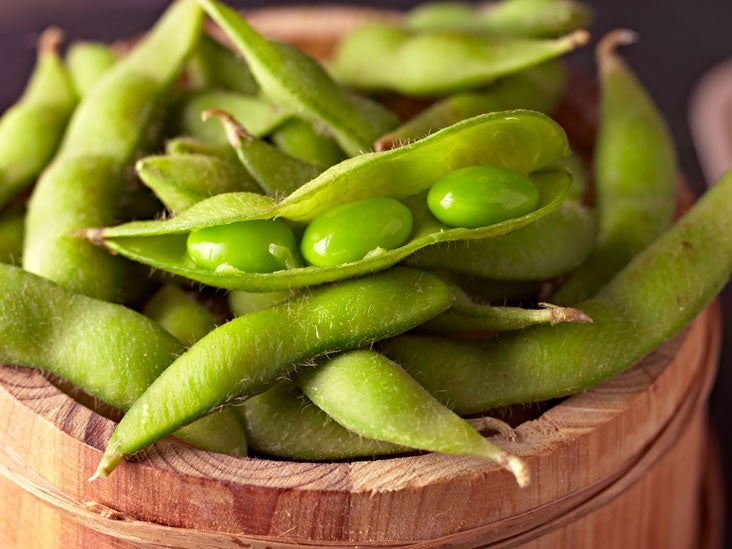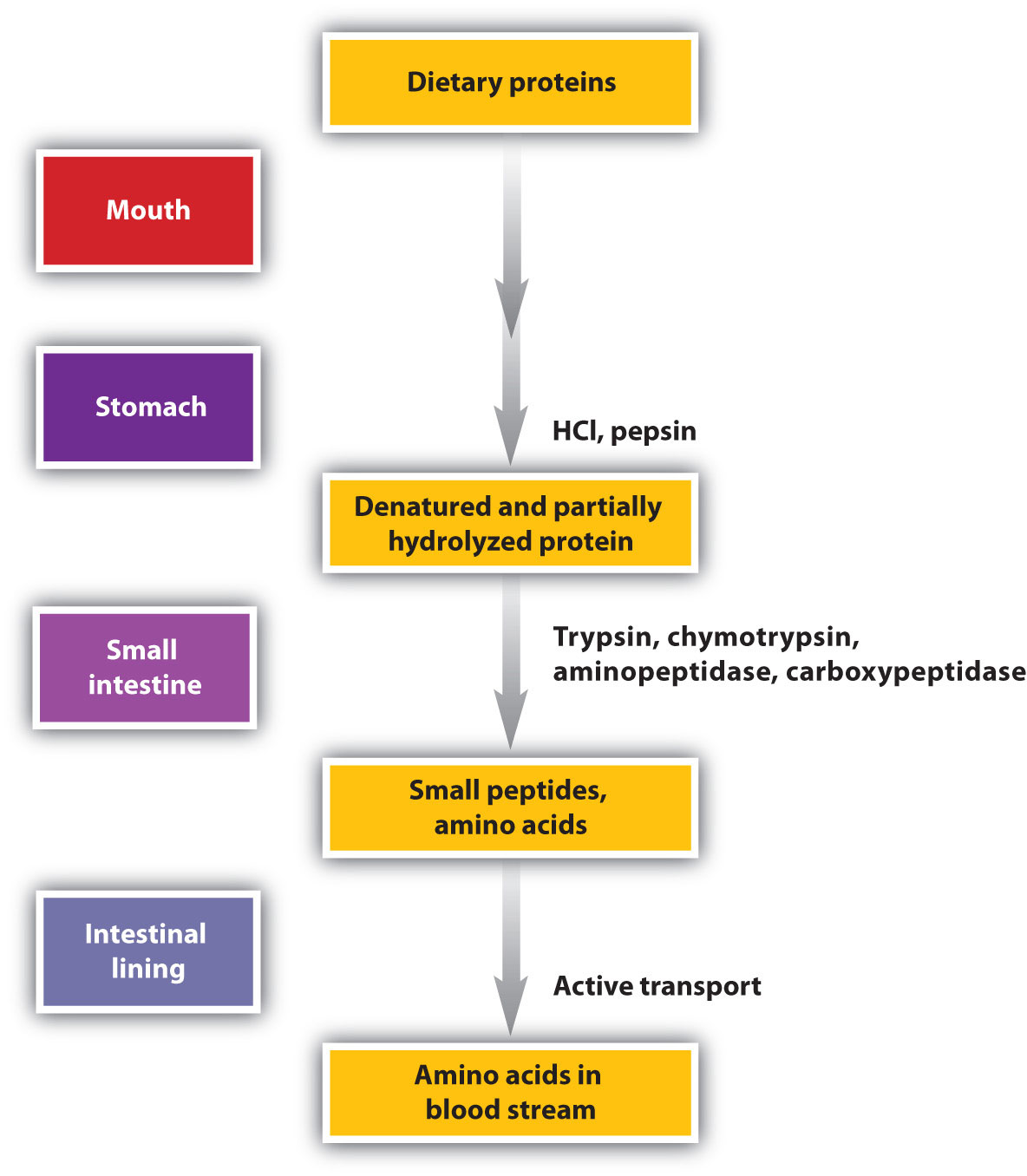
Lipids are hydrophobic substances: in the presence of water, they will aggregate to form globules to minimize exposure to water.

These small globules are more widely distributed in the chyme rather than forming large aggregates. Emulsification is a process in which large lipid globules are broken down into several small lipid globules. Bile aids in the digestion of lipids, primarily triglycerides by emulsification. When chyme enters the duodenum, the hormonal responses trigger the release of bile, which is produced in the liver and stored in the gallbladder. However, the bulk of lipid digestion occurs in the small intestine due to pancreatic lipase.

Lipid digestion begins in the stomach with the aid of lingual lipase and gastric lipase. Protein digestion is a multistep process that begins in the stomach and continues through the intestines. The steps in protein digestion are summarized in Figure 15.17 and Table 15.6. The amino acids are absorbed into the bloodstream through the small intestines.
#DIGESTED PROTEINS FREE#
Specifically, carboxypeptidase, dipeptidase, and aminopeptidase play important roles in reducing the peptides to free amino acids. Further breakdown of peptides to single amino acids is aided by enzymes called peptidases (those that break down peptides). Trypsin elastase, carboxypeptidase, and chymotrypsin are produced by the pancreas and released into the duodenum where they act on the chyme. In the duodenum, other enzymes- trypsin, elastase, and chymotrypsin-act on the peptides reducing them to smaller peptides. The enzyme pepsin plays an important role in the digestion of proteins by breaking down the intact protein to peptides, which are short chains of four to nine amino acids. Sucrose (table sugar) and lactose (milk sugar) are broken down by sucrase and lactase, respectively.Ī large part of protein digestion takes place in the stomach. Starch and glycogen are broken down into glucose by amylase and maltase. Digestion of carbohydrates is performed by several enzymes. The steps in carbohydrate digestion are summarized in Figure 15.16 and Table 15.5. The monosaccharides are transported across the intestinal epithelium into the bloodstream to be transported to the different cells in the body. The monosaccharides (glucose) thus produced are absorbed and then can be used in metabolic pathways to harness energy. Sucrase breaks down sucrose (or “table sugar”) into glucose and fructose, and lactase breaks down lactose (or “milk sugar”) into glucose and galactose. Other disaccharides, such as sucrose and lactose are broken down by sucrase and lactase, respectively. Maltase breaks down maltose into glucose. , sucrases, and lactases, which are also present in the brush border of the small intestinal wall. The disaccharides are broken down into monosaccharides by enzymes called maltases Pancreatic juices also contain amylase, which continues the breakdown of starch and glycogen into maltose, a disaccharide. Recall that the chyme from the stomach enters the duodenum and mixes with the digestive secretion from the pancreas, liver, and gallbladder.

The next step of carbohydrate digestion takes place in the duodenum. The acidic environment in the stomach stops the action of the amylase enzyme. The esophagus produces no digestive enzymes but does produce mucous for lubrication. As the bolus of food travels through the esophagus to the stomach, no significant digestion of carbohydrates takes place. The salivary enzyme amylase begins the breakdown of food starches into maltose, a disaccharide. The digestion of carbohydrates begins in the mouth.


 0 kommentar(er)
0 kommentar(er)
